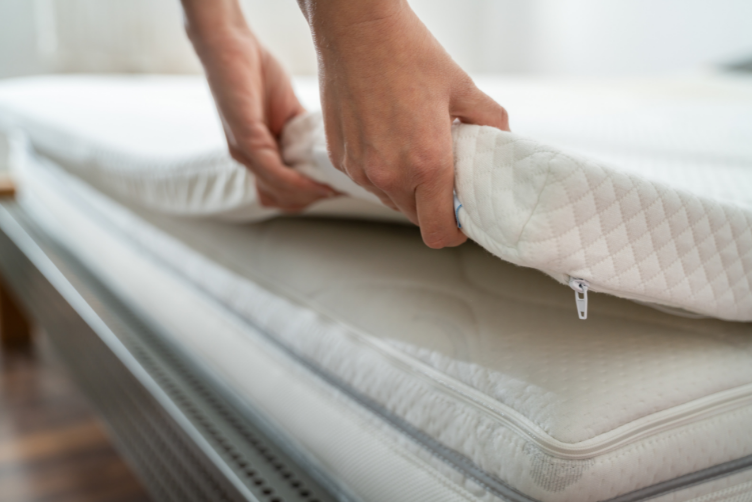Mattress toppers are especially useful for several groups of people: those looking to prolong their current mattress, renters, students and more. For all of these people, investing in a new mattress may be either 1) out of your budget or 2) not your responsibility, as your bed is provided by your landlord. So how do you get a comfier night’s sleep without forking out for a new mattress? Well, the answer is simple: a mattress topper! Many are inexpensive and vastly improve the comfort of your bed, so we’ve put together a topper guide to help you pick the right option for you…

This really depends on what you prefer in terms of firmness and fillings. If you’re an allergy sufferer then you should avoid toppers with natural fillings, like wool and down. However, if you aren’t an allergy sufferer, wool toppers provide a good level of comfort and softness. Down or feathers will provide this too, but you may have to shake these regularly to stop the feathers from getting crushed and compressed together. If you want a hypoallergenic topper that’s also natural, silk is a great option as dust mites will steer clear.
Another hypoallergenic option that scores well for comfort is a memory foam mattress topper. Its high-density structure will repel dust mites and has the ability to mould to the contours of your body completely. The polyester option is also hypoallergenic but may not be able to provide the level of support that memory foam can.
There’s a huge variation in price when it comes to mattress toppers, which is great news for those who don’t want to spend too much on one. However there’s a correlation between price and comfort – generally the lower the price goes, the lower the comfort will be, but of course this is subjective.
Memory foam is the most comfortable and supportive, therefore it’s the most expensive out of the lot. Having said this, there are other foam toppers such as reflex foam which are much lower in cost.
The natural toppers; wool, down/feather and silk, can have prices all over the spectrum. Some can be cheap, but the prices climb up for added quality.
Yes is a simple answer. They’re beneficial in terms of comfort, especially for an old mattress. If you’re in rented accommodation then using a mattress topper can be a real life-saver, but you should hassle your landlord if your mattress really isn’t fit for shape.
You don’t have to. Mattress protectors are designed to protect the surface underneath the sheets you sleep on. So if you already have a mattress protector, you should place this over the topper. Overall, this will shield the topper from what it’s exposed to such as sweat, spillages and dead skin cells.
Although similar, mattress pads and toppers are different. Toppers sit on top of mattresses (who would have known?), and whilst pads do the same, they actually have a sheet-like fitting around the sides so it can be secured to the mattress. The best way of thinking of a pad is to think of a mattress protector and topper hybrid.
Before investing in a mattress topper, if you suffer from back pain then we would certainly advise revising your current mattress. A mattress topper will not completely eradicate back pain because you will still have your current mattress as the foundation, and the mattress topper will essentially accentuate this. If you’re struggling to find the right option for you to help with back pain, read our guide: ‘Waking up with back pain? The mattress tension for you…‘
We hope our mattress topper guide answered all the questions that could cross your mind when considering buying one.